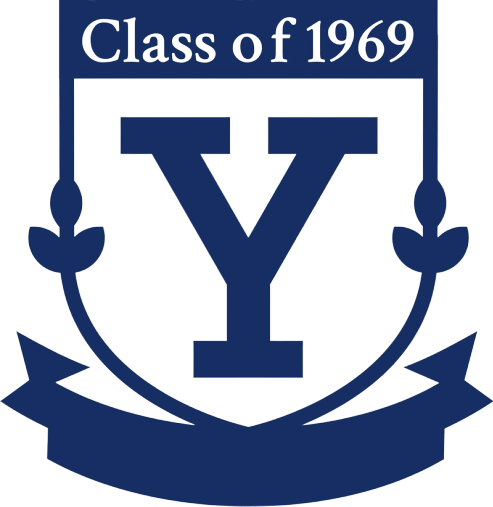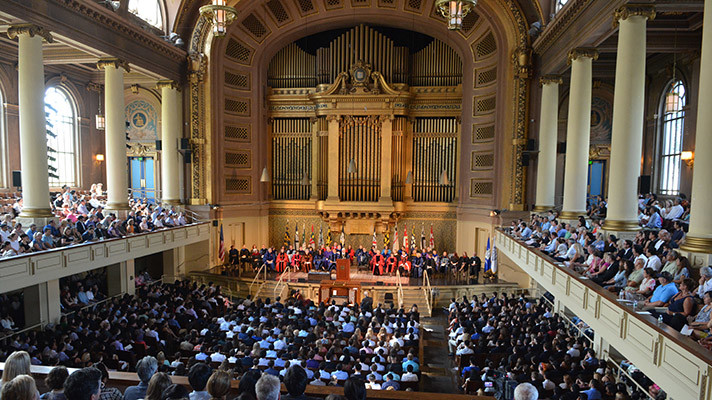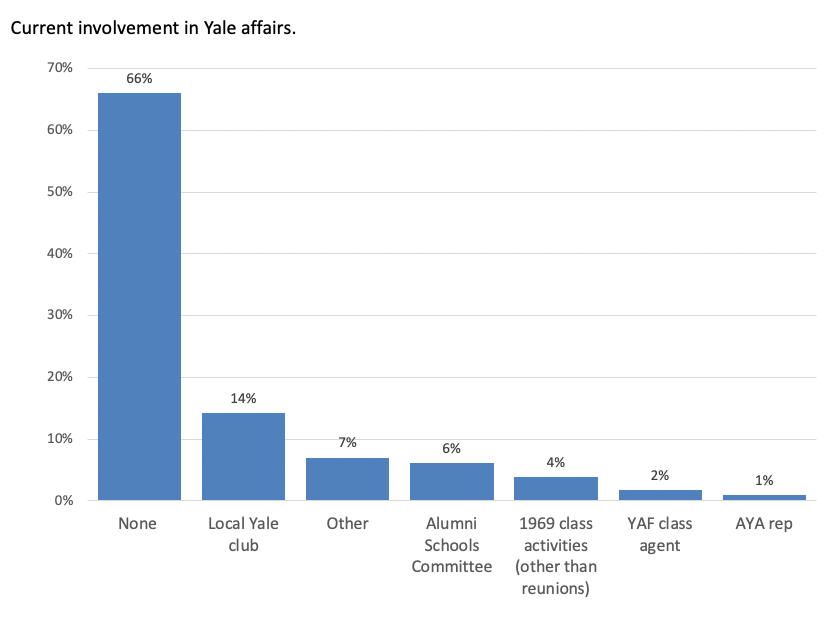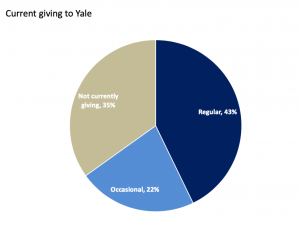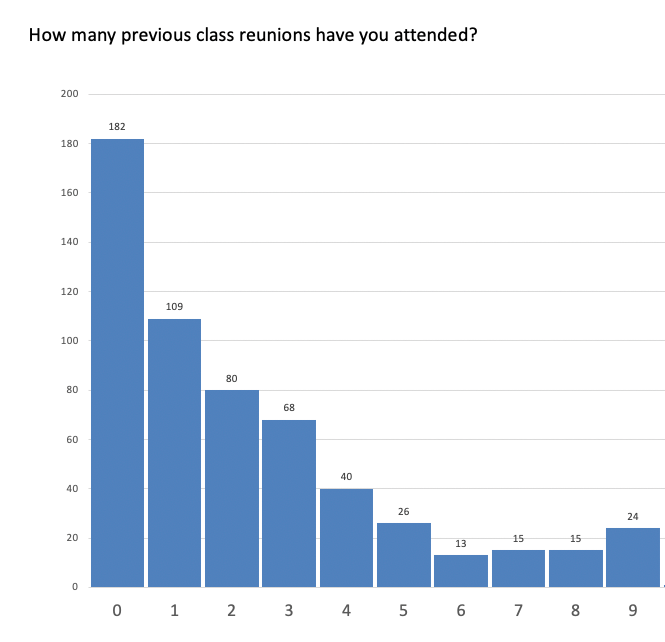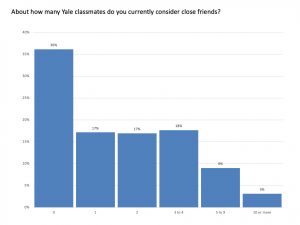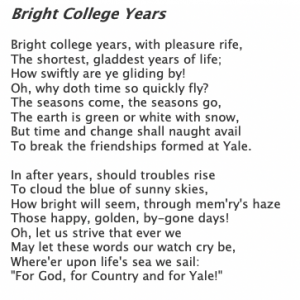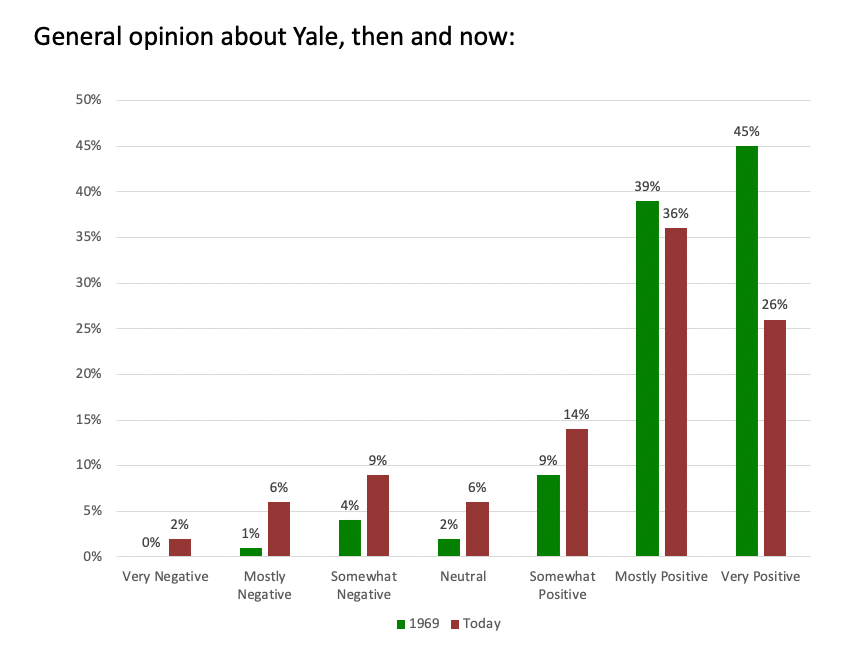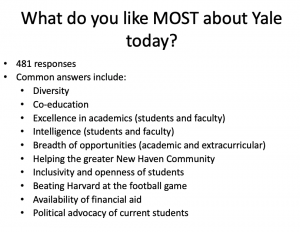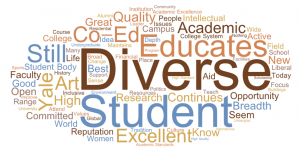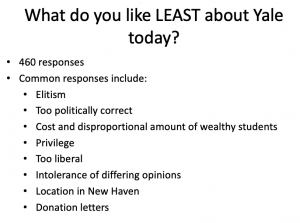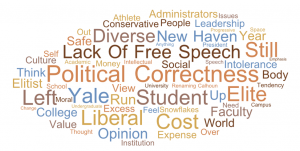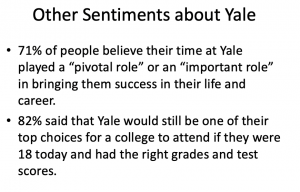Survey: 6. Boola, Boola – Our Relationship With Yale
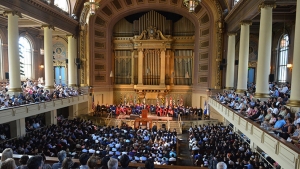
At our Freshman Assembly in Woolsey Hall, held at the end of that frenetic first week of moving in, buying used furniture, getting new books, and meeting scores of new people, we gathered to hear Kingman Brewster address us as Yale men for the first time. Among other things, he observed:
“You’ll notice something unusual about this place: About half the students walk around as if they own the place.
The other half walk around, frankly, as if they didn’t give a damn WHO owns it.”
That captured something that persists: We were … and are … an exceptional bunch, in both senses of that term. Yes, we had and have extraordinary talents, AND there’s an exception to almost every statement you can make about us as a group.
As the results of our 2018 pre-reunion class survey show, that diversity of attitudes and views extends across political, career, lifestyle, health, etc., and it certainly is reflected in our relationship with and to Yale.
Let’s look, first, at how ACTIVE we are in Yale-related things, and then explore some attitudes about Yale, in 1969 and now.
Current Involvement
About two-thirds of respondents have NO current involvement. That’s not really surprising, but one might hope for more involvement. About one in seven of our classmates are active in a local Yale club. Other involvements are sprinkled quite thinly among us.
Speaking of involvement, here’s a plug from our humble Webmaster, Wayne Willis: The class leaders – Reunion Co-chairs, Alumni fund volunteers, AYA Reps, and webmasters – remind us that all class activities are, at root, led by volunteers. AND, you will be welcome. (Planning and running class events can be great fun, too.) Just use the Contact form on the site to volunteer for anything. We especially need help with activities related to the upcoming Big One.
Giving
I remember being surprised that only about half of Yale classes make financial donations to the Alumni Fund. “The other half don’t give a damn who owns it” indeed!
The survey results suggest that our class is slightly better than average in this respect. (However, one must keep in mind the possibility of non-response error in the survey results; non-givers may have been less likely to participate in the survey than givers, which would result in an overestimate of the percent who contribute.) It’s great that nearly two-thirds of our class are at least occasional contributers to Yale, because our unrestricted annual giving is core to need-blind admissions and making Yale truly accessible for applicants from all socio-economic backgrounds.
Reunions
When it comes to attending reunions, 32 percent of the survey respondents have not attended any, 19 percent have come to only one reunion, and the rest have been to more than one. Four percent report that they’ve come to all nine of the every-five-years reunions we’ve held so far. The mean number of reunions attended is 3.2 for men who have been to at least one, but just 2.2 if the never-attended are included. I hope our 50th will bring in nearly all of the former and a good number of the latter group of classmates! We hear from the Yale Alumni Association that we can expect 500-600 classmates to be there.
Friendships Formed At Yale
There is something special about college friendships formed at Yale.
As shown in the chart below, almost two-thirds of us have current close friends from Yale.
Any friendship that lasts for 50 years is pretty amazing. But it’s also interesting that for most of us, there are only a small number of guys from those bright college years that we now think of as close friends.
Opinions About Yale
Any of the above could be used as indicators of how members of our class feel about Yale, but we asked them to report their general opinion of the institution, in 1969 and today, using a seven-point scale ranging from “very negative” to “very positive.” As seen in the bar chart below, there’s no doubt that most of us loved Mother Yale when we attended, but it’s also clear that our opinions have shifted toward the negative in the years since. Back then, only one percent of our class held a very negative or mostly negative opinion, but now eight percent are in those categories. And the “very positives” are down from 45 percent in 1969 to only 26 percent today.
Pros
To explore these feelings further, we offered two open-response questions: what you like MOST about Yale today, and what you like LEAST.
What we liked most, culled from 481 open-ended responses, is shown below in a summary listing and in a computer-generated “word cloud”. The size of each word indicates its frequency in the responses.
Cons
Ironically, some of the things that are liked LEAST about Yale today are similar to the things that some people liked the most. And although we’ve seen in previous reports that most members of our class place themselves on the liberal side of the political spectrum, the comments about what we don’t like at Yale today reveal that many of us are concerned about respect for free speech and thought in the current campus climate.
For members of our generation, political liberalism involved a commitment to free speech, even when it was distasteful or hurtful; for many young progressives today that equation has changed and “microaggressions” are to be openly denounced or stifled altogether. So although we may still see ourselves as liberal, we probably sound (to the students now at Yale) just as cranky and old-fashioned as those alumni seemed to us, back in our day, who wrote letters to the Alumni magazine protesting co-education and dope-smoking hippies on campus.
Salience
There’s a concept in social science research called salience. It’s a measure of importance or intensity. One can have an opinion about something – say current attitudes toward rap music. Some like it and some don’t. But a second dimension, salience (how important or critical the issue or question is to the respondent ) is also important to understand.
You’ve seen the attitudes toward Yale above. The salience of our Yale experience is evident in these last results:
Enough said. What are YOUR thoughts? (Leave in comments below.)
